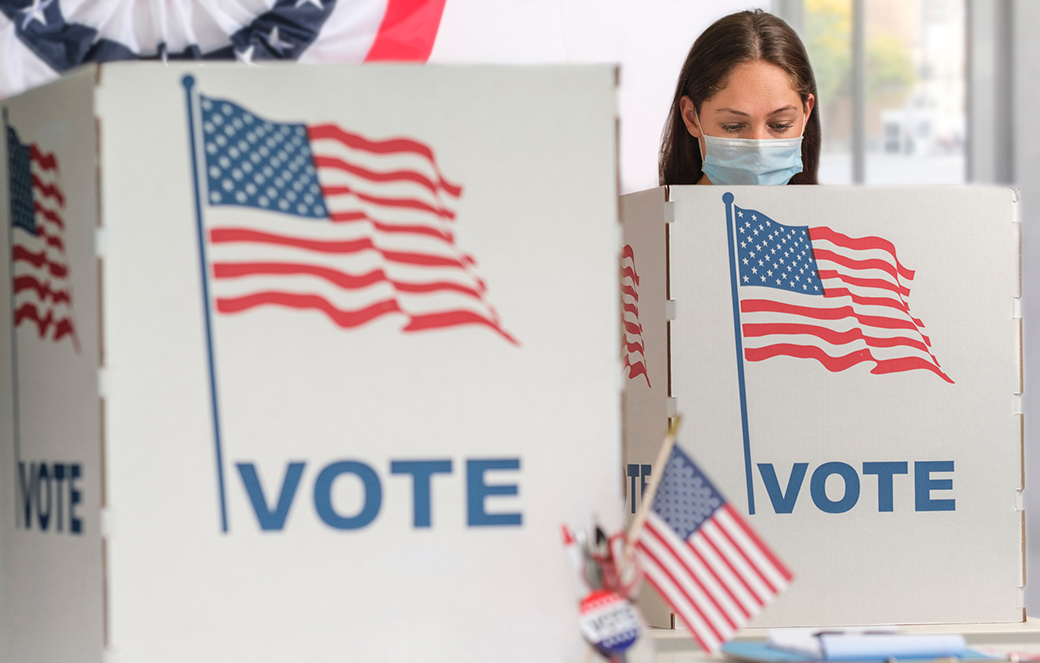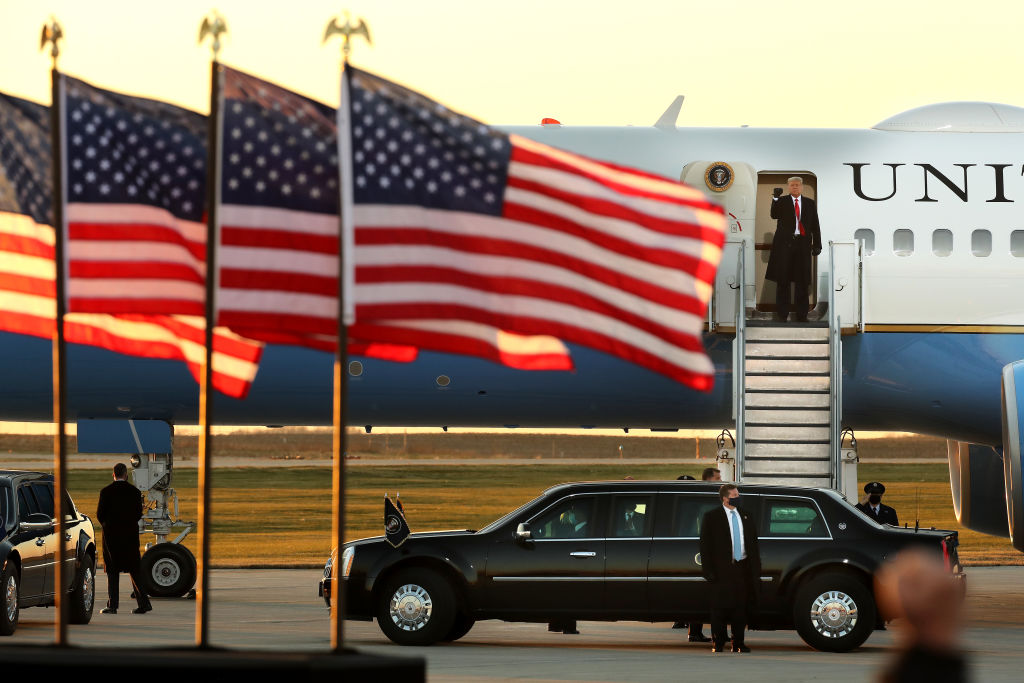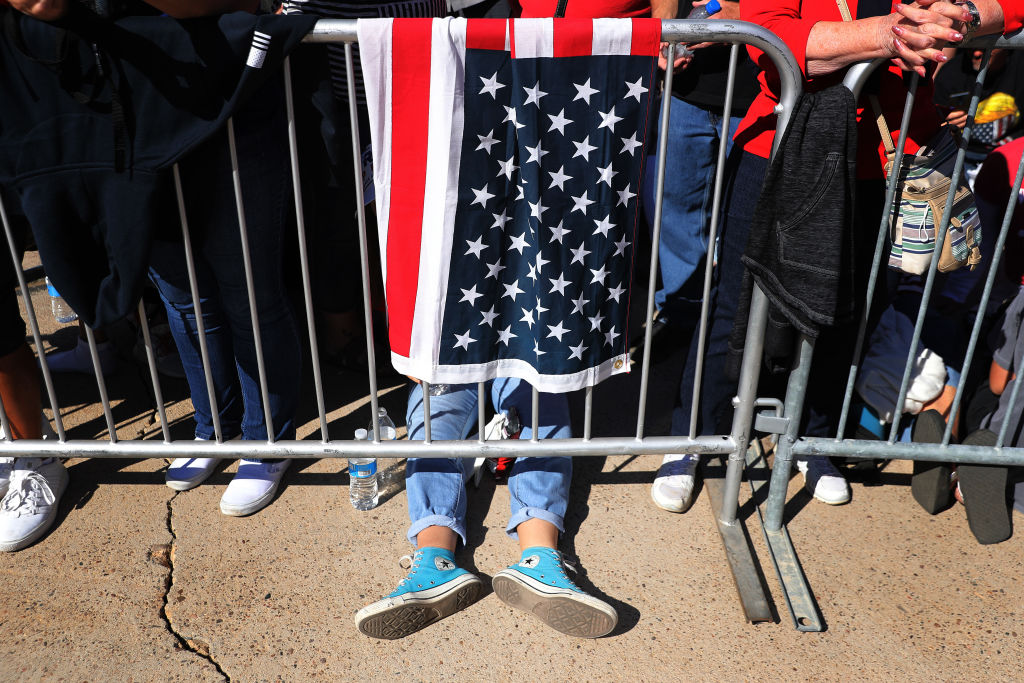On a windy afternoon, Debra loaded her Buick at Walmart in Lancaster, a desert community 70 miles from downtown Los Angeles. A tall, slender woman in her 60s, she hoisted bags of stackable plastic drawers – things to make a home more orderly – into her trunk, with a look of resigned weariness. As with many women across the country, she had good reason to feel tired.
The COVID recession has disproportionately squeezed women just as the country is nearing an historic election, where their votes will be crucial. Women workers are concentrated in industries – like retail and tourism – that have been most shaken by business closures and staff reductions. Just last month, 1.1 million workers dropped out of the labor force. The vast majority of them – 865,000 – were women, according to a report released by the National Women’s Law Center.
Others have taken on extra homeschooling responsibilities. That’s the case for Debra – who wanted only her first name used for this story. At 64, she’s supervising the online schooling of her grandchildren so that their parents can work. She has recently had a kidney transplant after enduring 11 years of dialysis. “What can I do? You know. We’re family.” It’s what you do.
According to an April study, nearly 4.5 million child care slots are at risk of disappearing without adequate federal support.
Meanwhile, child care providers are “hanging on by their fingernails,” as Rhian Evans Allvin, the CEO of the National Association for the Education of Young Children, told NPR in September. Almost 4.5 million child care slots are at risk of disappearing without adequate federal support, according to an April study.
* * *
Republicans had hoped to tell a different story. Early this year, first daughter Ivanka Trump – the president’s adviser on women’s issues – touted the historically low unemployment rate among women, a major expansion of the Child Care and Development Block Grant, and the adoption of a paid family leave policy that targeted federal workers.
But the president’s critics say life before the pandemic was not as great as advertised, that Trump’s policies have done little when viewed against the backdrop of an agenda that undermined women’s economic well-being overall and favored large corporations and the well-to-do.
Now the COVID-19 pandemic has simply made apparent the longstanding weaknesses in an economy buttressed by low paid women’s work that offered inadequate support for families, critics say.
Since 2000, women’s wages have been growing more slowly than those of men. Meanwhile, women suffer from lack of access to affordable child care and paid leave, according to Shilpa Phadke, vice president of the Women’s Initiative at the left-leaning Center for American Progress.
Trump’s efforts to unravel the Affordable Care Act has had a measurable impact: The number of uninsured grew by 2.3 million between 2016 and 2019.
“There were about 4 million women working multiple jobs. They were doing it because they were not making enough money from one job,” says Phadke.
Moreover, the Trump administration’s efforts to unravel the Affordable Care Act, a 2016 campaign pledge, has had a measurable impact: The number of uninsured grew by 2.3 million between 2016 and 2019, even before COVID. A case that could overturn the ACA is expected to be heard in the Supreme Court just after the election.
Those actions have constituted a direct attack on women’s health, according to Hannah Katch, senior policy analyst for the Center for Budget and Policy Priorities. “The most important action taken for women’s health in the last couple of decades was the passage of the Affordable Care Act. It dramatically expanded access to health coverage for millions of people, including millions of women,” she said.
In addition, the administration rolled back an Obama-era reporting requirement intended to push large companies to address gender pay disparities. Ivanka Trump, speaking on behalf of the administration, echoed the Chamber of Commerce’s criticism of the rule when she said the “intention was good” but it would not produce the intended results.
The Trump administration opposed raising the minimum wage, which has remained at $7.25 per hour for more than a decade. Nearly two-thirds of minimum wage workers are women.
The administration also worked to exempt large employers – like Target and Amazon – from a paid leave requirement passed by Congress so employees could quarantine or look after a child whose school was closed due to the virus. “Who ever heard of a large-business carve out?” says Phadke.
Since May, the number of poor Americans has ballooned by 8 million, according to researchers at Columbia University.
Also likely pressing on some voters’ minds is the failure of the administration and Republicans to advance further economic relief for workers who’ve been laid off due to COVID-19. The expanded unemployment benefits, authorized under the bipartisan $2 trillion CARES Act, expired at the end of July. Since May, the number of poor people has ballooned by 8 million, according to researchers at Columbia University.
The coronavirus pandemic has sent into a recession the once expanding national economy that Trump has claimed as his success, and many of his supporters from 2016 now face economic stress and uncertainty as they go to the ballot box.
Women, in particular white women in swing states like Pennsylvania and Wisconsin, will be a deciding force in the election, and so far most have sided with Biden. In 2016, according to exit poll data, 52 percent of white women voted for Trump, but a recent survey from Quinnipiac University shows that now 55 percent of white women intend to vote against him. Among all women, Biden edges out Trump by 23 points, according to a New York Times/Siena College poll conducted in mid-October. Senior women, who are increasingly concerned about the pandemic, “are some of the biggest movers” when it comes to the shift away from Trump, says Amy Levin, a partner with the Benenson Strategy Group. Her firm recently conducted polling for the AARP.
* * *
Throughout his 2020 campaign, Trump has called out for support from “suburban housewives of America.” In August, the president tweeted his confidence in their approval after he repealed an Obama-era rule allowing low income housing in suburbs, created to address discriminatory housing policies.
But more recently Trump’s appeal to women swing voters began to sound desperate. “Suburban women, will you please like me? I saved your damn neighborhood, OK?” It was a bit of a misfire. The audience was a working class Johnstown, Pennsylvania, crowd.
A mid-July poll showed Trump edging out Biden among white women without a college degree by just 9 points.
Some of those white working class women, traditionally strong supporters of the president, have drifted away. He won the support of women without a college degree by 27 percentage points in 2016, the Los Angeles Times reports. A Washington Post/ABC news poll conducted in mid-July showed him edging out Biden among white women without a college degree by just 9 points.
It’s not clear they are all abandoning him for reasons of policy, however.
Leah Wilkins, 53, a mother and health care worker from Janesville, Wisconsin, a small city at the center of Rock County that Trump lost by less than 8,000 votes in 2016, says the economy has been “OK” for the last four years. Unemployment is now at 6.7% in Janesville, down from 15.8% in April.
Wilkins says that in 2016 she voted for Trump yet now, in mid-October, she remains undecided on whom to vote for. “My ballot’s still sitting on the table,” she said.
A self-identified conservative, she’s been turned off by Trump’s personality rather than his policies. She says her 14-year-old daughter is appalled by the president’s reckless behavior and begs her not to support him.
Asked if she could see why her daughter is so appalled, Wilkins is quick to reply. “Absolutely. Absolutely. It’s an embarrassment to me.”
It is not apparent, however, that pandemic-induced economic stress translates into support for Biden. Lisa Sexton, also from Janesville, is the main provider for three children – one of whom was out of work when a co-worker came down with COVID – and three grandchildren. As Sexton sees it, the statewide order limiting the number of people who can gather in bars and restaurants, recently reimposed by Democratic Gov. Tony Evers, is what’s harming the economy, not Trump’s handling of the pandemic.
“Economically, it’s been hard on me,” says Sexton, who is 51. In November, she will vote for Trump a second time.
The women hurt most by the pandemic both in terms of health effects and job loss are women of color like Debra, who is Black. By and large, they have already made up their minds and will not support the president’s re-election. Just 10% of nonwhite women support the president, according to a poll conducted for Fox News in early October. The ravages of the pandemic could make them more motivated to vote than in prior elections. Debra said she felt “angry,” a word she repeated more than once. The president had recently left the hospital when we spoke. “He has the virus, but he’s out socializing,” adding that she lost a family member to COVID in June.
As for the election, she wants to see an end to the “chaos” in the highest office. “It’s got to be a change. It’s got to,” she said. But that won’t mean an end to the uncertainty that she’s facing personally. “You don’t know if you will catch the virus. You don’t know if you’re going to be here next month.”
Copyright 2020 Capital & Main





